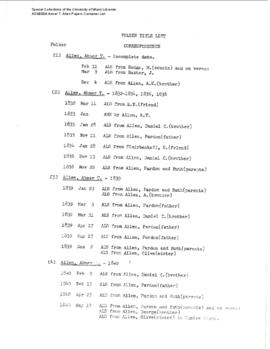- ASM0491
- Colección
- 1582-1584
This collection contains 26 bound and paginated 16th-century manuscripts describing contemporary conditions and military operations in the Canary Islands. It consists of a series of letters (15 items) and an assortment of other official documents (11 items). Twelve letters bear the imprimatur of King Philip II of Spain.
Primarily, the collection documents the administration of Lázaro Moreno de León, who served as governor of the islands of Tenerife and La Palma for two years (1582-1584). The last two items in the collection mark the end of Moreno de León's tenure and reference his successor, Juan Núñez de la Fuente, who served until 1589. Moreno de León appears in 18 of the items in the collection, either as subject or recipient (in the case of correspondence). However, the collection includes only one item bearing his signature: Item 18, authored by Diego de Ayala y Rojas, conde de la Gomera, and signed by Moreno de León as a witness.
During Moreno de León's tenure, an epidemic broke out on the island of Tenerife, causing considerable loss of life (documented at length in Item 22). The collection also reflects historical events following Spain's conquest of Portugal. During the dynastic crisis that followed the death of Portugal's King Sebastian in 1578, the throne was claimed by António, Prior of Crato, who was defeated by Philip II in 1580. By 1582, António had relocated to the Azores, where he attempted to establish a government in exile with the support of France. Item 3 provides a set of instructions for a dispatch boat that was sent to the Canary Islands that same year, after word of a possible attack by António. In early 1583, ships loyal to António did attempt an attack on the island of Gomera, but were repelled by local forces under the command of Ayala y Rojas and Moreno de León (documented in Items 18 and 19).


